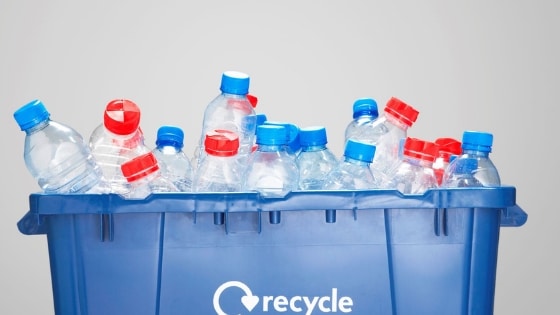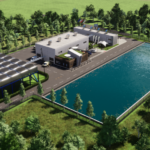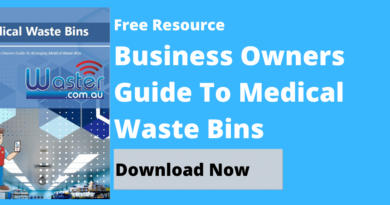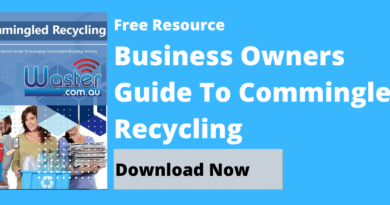Recycling Separation Process ♻️ – It’s Not That Complicated!
Energy Disrupter
Recycling separation process ♻️: As a normal human being, it can be so hard to sort rubbish. You sometimes can’t tell if you can recycle this particular item or not. Personally, it drives me crazy when this happens! Should I throw it in the rubbish bin or not? Should I take my chance (“shoot my shot”, so to speak) and recycle it? I never quite know most of the time. Can I even do anything about it?
It is not only me, though, as machinery is not exempted from this. They also have trouble sorting out if an item is recyclable or not due to common items nowadays comprising of different materials.
As a result, many countries have low recycling rates. The Earth surely suffers from this, especially with plastics roaming around the world, either on land or at sea.
A huge amount of items are thrown in general waste that could be recycled if placed in the correct bin.
>Download Now: Free PDF Business Owners Guide To Commingled Recycling Bin Services
The questions to be asked is this: how should we effectively separate recycling?
Here at Waster, we always promote responsible waste management. For more useful information and tips on recycling, take a look at our blog on recycling plastic packaging.
It’s important to know what materials can be recycled and what can go to landfills, instead. By knowing this vital information, it can help the Earth immensely!
A bit about Waster
Before we continue our topic on the recycling separation processes you should know definitely know, let me share more information about Waster.
We here at Waster provide you with innovative solutions for your and your business’s waste management and recycling needs. Additionally, we provide flexible, 30-day contracts instead of the typical lock-in contracts, which proves to be better.
Click on the blue button to learn more.
Recycling separation process: the importance of effective systems
It is important to be educated on the importance of the recycling separation process. Knowledge of this kind of subject can help in saving the Earth. With that said, see our blog on Australasian recycling labels for a more effective way to help you recycle right now!
An effective recycling separation process means that more waste can be recycled while less waste is sent to landfills, which benefits both the people and the environment. Materials that can be recycled are paper, cardboard, plastic (depending on its type), metal and glass.
Just as there are recyclable items, there are also non-recyclable items available which are usually sent to landfills. These include items such as:
- Plastic bags
- Non-recyclable plastic
- Takeaway coffee cups – if not compostable
- Disposable nappies (though these can be recycled in the correct facilities).
- Polystyrene
- Bubble wrap
- Medical Waste (treated via autoclave or incineration)
- Dead animals
- Oil
- Ceramics
Negligent waste management can factor greatly in the destruction of the environment. Landfills pose a huge threat to the Earth with all their different types of rubbish.
First, it contaminates the land by saturating it with toxic chemicals or hazardous substances (if not a modern facility with gas capture and leachate capture). Second, mismanagement of waste like burying organic materials can release methane, a potent greenhouse gas that contributes to one of the Earth’s biggest problem: global warming.
Fortunately, people have long come up – and continue coming up – with some ways to address the problem at hand. People have become more aware and shown consciousness of sustainable lifestyles.
[embedded content]
How does the recycling separation process usually occur?
Typically, recycling facilities have an implemented process to carefully separate recyclables from the non-recyclable ones, sorted further and then recycled.
Of course, we will give a more in-depth talk on the usual process.
First, they will collect all the waste and take them to Recover Facility. There, they then open the bags that contain the waste and put them onto a conveyor belt where they start the separating process. They sort out the materials – they inspect the items and determine if they can recycle it or not. Those non-recyclable are removed.
Every recyclable materials are further sorted and processed differently from other recyclables. Afterwards, the materials make their way to different industries.
Recycling separation issues: what should we do about it?
In Australia, we only recycle 12 per cent of our plastics – quite a low number, Mr Waster says. They are either sent to landfills or scattered across the streets and oceans, creating more pollution problems. Times are different now, wherein people are now becoming much more aware of responsible waste management.
According to a sustainability matters article, over 90 per cent of Australian consumers and businesses alike are already becoming concerned about environmental sustainability. – but only half of them believe that they are doing enough to protect the planet, as per HP Australia and Planet Ark.
With that being said, it was also stated that 70 per cent of Gen Y (aged 22-37) stated that they prefer or desire to work in a place where environmental sustainability is promoted and preached, while 48 per cent of Gen X (aged 38-53) also stated this.
Brands are already highly encouraged by consumers to adapt to a workplace suitable for the environment.
HP
As one of the biggest brands, HP Australia, represented by HP South Pacific director Paul Gracey, stated the following: “HP Australia has been a long-standing supporter of Planet Ark. Through this research collaboration we aim to help Australian consumers uncover new ways to help the planet, while putting a spotlight on the need for businesses and brands to take meaningful action towards becoming more environmentally sustainable – both for the health of the planet and future-proof their business.”
Though already aware and conscious, the study also said that Australians fall behind in recycling compared to other countries – another important thing to work on aside from the separation process itself. The leading environmental problems they experience are water pollution – with plastic as the main cause – and landfill waste.
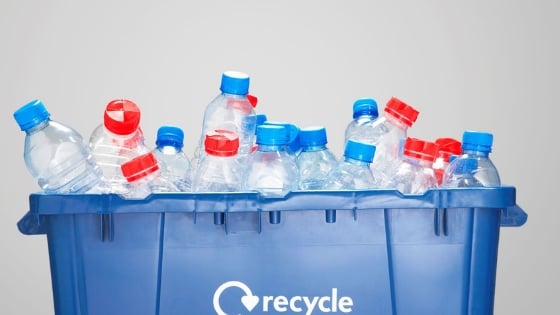

What seems to be the major problem in the recycling separation process? Well, it really stems from the fact that as already stated, it is difficult to sort out the rubbish. When anything takes a considerable effort, humans tend to find a way to not do it! Take a look at our blog talking about chip packets or bag recycling.
Thankfully, technology is rapidly advancing that even serious problems like pollution are bound to be solved by the rapidly advancing technology created nowadays.
To learn more about technology and waste management working hand in hand, visit our blog on smart waste solutions.
With the help of technology, we can make improvements!
A way to revolutionise the recycling separation process is surely by utilising the technology that we have today.
Reports state that a new “invisible bar code” technology is being tested which aims to make recycling easier.
The world’s biggest brands, including the likes of Nestle, PepsiCo and P&G along with others, have already chipped in to digitally sort out recyclable from non-recyclable waste. They were brought together by the Ellen MacArthur Foundation, a charity that aims to speed up the transition to a circular economy and better recycling separation process improvements.
The idea is that the packaging – which is covered in invisible bar codes – are sorted out in factories by the machinery available there. By scanning the “invisible bar codes” found in the packaging, the database contained in the machinery intelligently sorts out the materials that can be recycled – and hugely boosts the recycling separation process.
As stated by Dr Ravi Sharma of Digimarc, “The bar code technology allows accurate identification of every package. So that then allows the industry to address some of the biggest problems they are facing.”According to Dr Sharma, the bar code technology is currently 90 per cent accurate, which is already excellent for its initial stages.
Asked if the digital bar code technology allows the facilities to do what could not be done before, Dr Sharma said “Distinguishing food-grade plastics from non-food-grade plastics so that the right kind of plastic can be reused to manufacture new items.”
Conclusion on recycling separation process
Thankfully, people are now coming up with ways on how to remove – or at least reduce – pollution in the environment.
Both people and technology play a huge factor in this and improving the recycling separation process. Countermeasures have been made already to ensure that recycling becomes easier, therefore lessening the waste that goes into landfills.
Although the initiative is well-appreciated, humans, with the help of technology, still have a long way to go for it to have a positive impact on Earth.
Waster: the environment’s partner in waste management
If you are looking for a firm hell-bent on promoting a responsible way of managing waste, then look no further as Waster is here to help you with that! We are an innovative solution for your waste management and recycling needs.
Check out our services and pricing on Waster’s waste recycling shop.
Also, call 1300 WASTER (1300 927 837) or submit an enquiry here at [email protected] to learn more.


